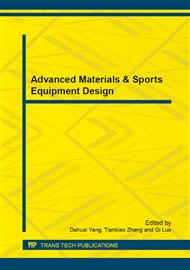p.182
p.188
p.194
p.199
p.204
p.210
p.216
p.222
p.228
Simulation of the Screw Thread Connection Temperature Field Based on ANSYS
Abstract:
Friction of screw thread connection will cause temperature rise while projectile unloading, Too high temperature which would cause the combustion will result in significant safety issues, so the temperature field of screw thread connection must be analyzed when the projectile unloading. But friction is a complex process, how to simulate the temperature change accurately is the key link of the whole analysis. In this paper, friction of the screw thread surface in the process of unloading is simulated based on thermal analysis function of ANSYS. According to temperature distribution of the screw thread surface, the highest temperature and position of the highest temperature point is determined. The relationship between temperature and different speed is analyzed, which can provide a theory basis for safely unloading.
Info:
Periodical:
Pages:
204-209
Citation:
Online since:
October 2013
Authors:
Keywords:
Price:
Сopyright:
© 2014 Trans Tech Publications Ltd. All Rights Reserved
Share:
Citation:


